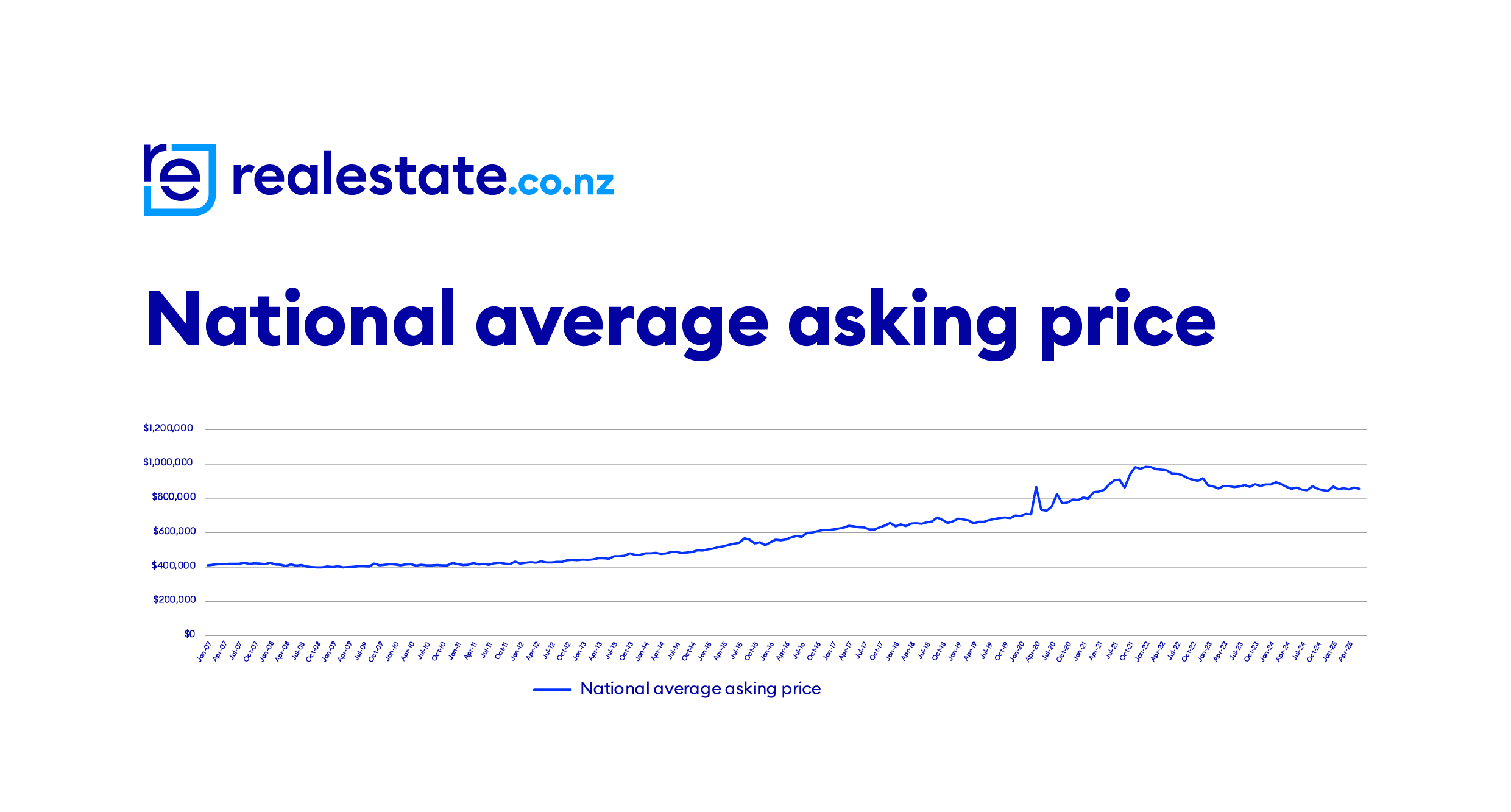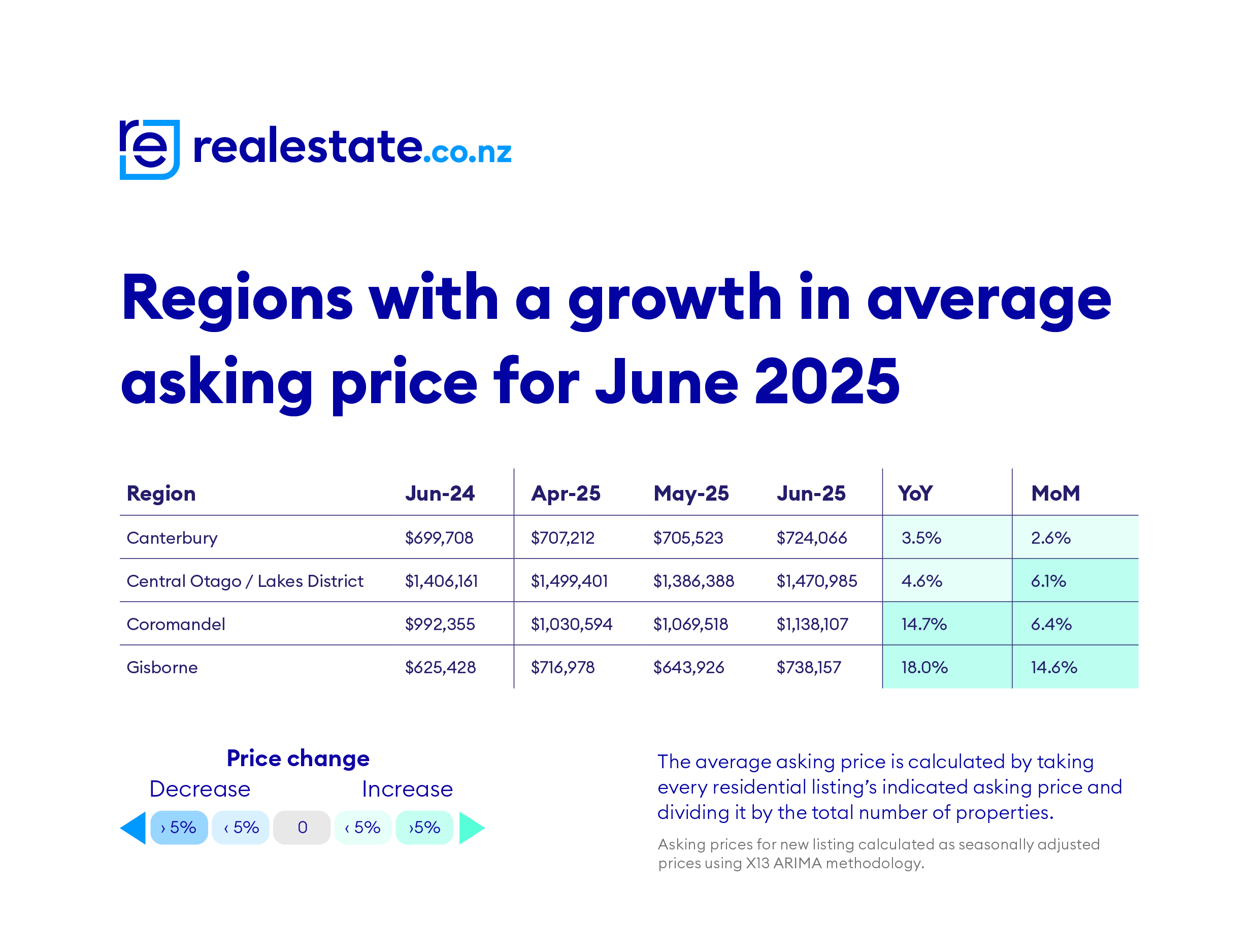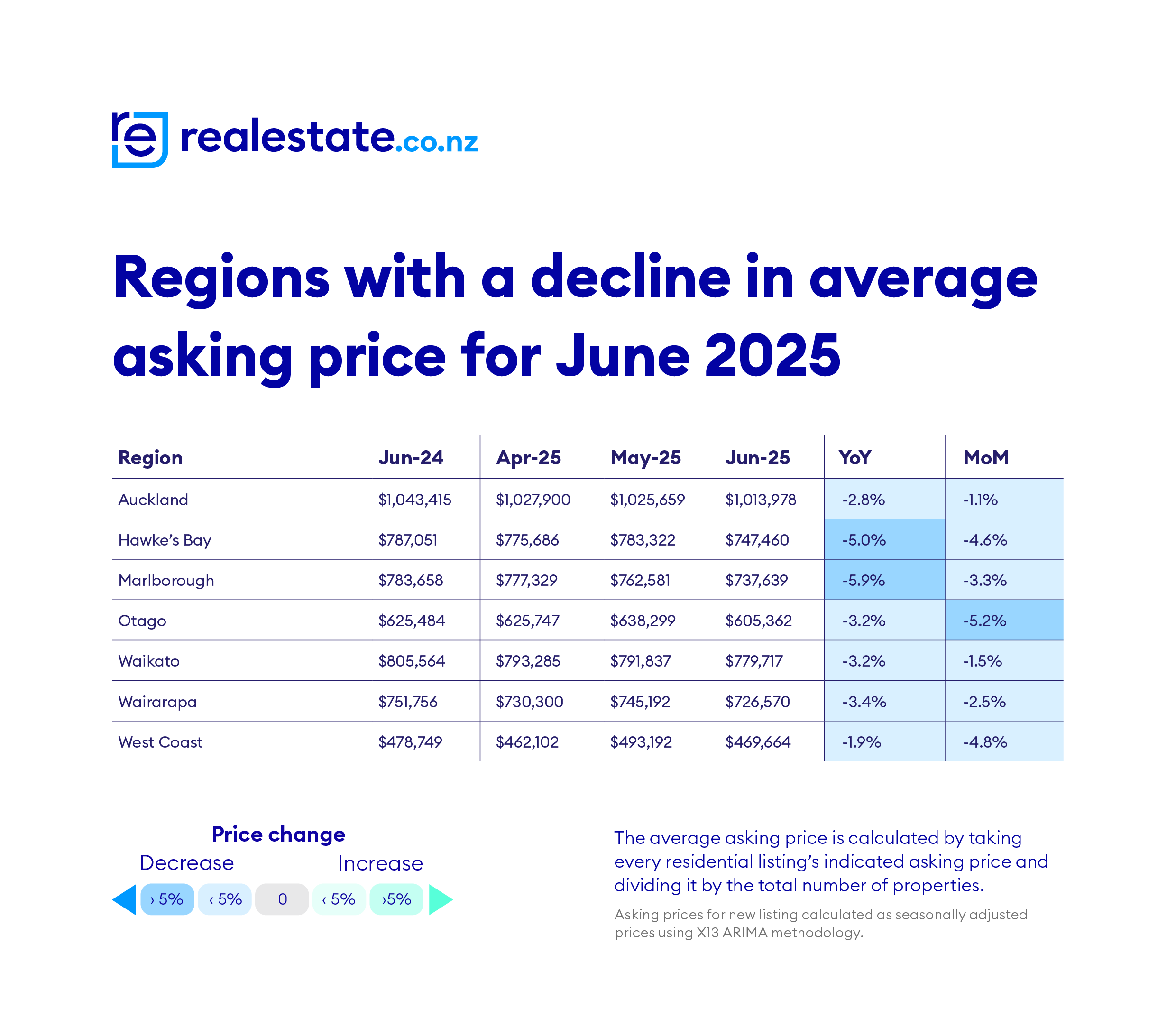No meaningful price movement since 2022, expert says

New Zealand’s housing market continues to tread water, with average asking prices remaining virtually unchanged for the past 2.5 years.
According to realestate.co.nz’s June 2025 Property Report, the national average asking price fell 0.9% year-on-year to $855,360.

Vanessa Williams (pictured), spokesperson for realestate.co.nz, said the market has lacked meaningful price movement since 2022.
“We could say the market is stable but in reality, it’s flat. There is very little movement and when we do see any change, it tends to be in the regions,” Williams said.
“A flat market is good for both buyer and seller expectations, but we also know that a moving property market is a good sign of a recovering economy.”
Regional price action: Southland Up, Northland down
While the national picture remains still, Southland continues to outperform, setting a new all-time high average asking price for the second consecutive month. Prices rose 8.6% year-on-year to $568,647, with a 2.9% lift in the first half of 2025.
By contrast, Northland saw a sharp drop of 9.1% to $773,681, the first time average asking prices have dipped below $800,000 since July 2024.
In total, seven regions recorded declines in average asking prices on both a monthly and annual basis, while four regions saw growth across both timeframes.


“The South Island is certainly gaining ground,” said customer director Gavin Lloyd, pointing to affordability and lifestyle appeal.
Stock levels slide in back-to-back months
National housing stock in June totalled 32,384 listings – 2% higher than a year ago, but the lowest level in three months. Stock has steadily declined from its 2025 peak of 36,870 in March, to 35,924 in April, then 34,415 in May.
Gisborne and the West Coast stood out for rising stock levels – up 48.8% and 20.4% respectively. Meanwhile, Southland led the year-on-year declines with a 12.8% fall, followed by several other regional areas including Waikato, Bay of Plenty, and Manawatu/Whanganui.
Williams said the drop in listings may indicate renewed market interest.
“We are hearing across the country that open homes are becoming busier and with interest rates at a more reasonable level, people are ready to hit go on their property moves,” she said.
“There’s also a bit more confidence in the business market. Although these are all early signs, they’re promising ones.”
New listings dip as sellers hibernate for winter
Nationally, new listings fell 2.5% in June compared to the same month last year, totalling 7,612. Gisborne bucked the trend, with new listings jumping 25.8% year-on-year, the highest increase across all regions.
At the other end of the spectrum, the West Coast and Nelson and Bays recorded the steepest declines – down 15.8%. Nelson, with just 117 new listings, saw its lowest June tally in 18 years of realestate.co.nz data.
“Up until now, it’s been a busy year of new listings, but these numbers might just show sellers are getting the winter blues,” Williams said. “We’ll expect to see these numbers pop up again in springtime.”
Auckland CVs offer clarity in a flat market
Auckland’s Council Valuations (CVs) have added fresh context for property buyers and sellers in the region, despite being released a year after their valuation date.
June data for Auckland showed:
-
2,912 new listings, down 1.1% on June 2024
-
An average asking price of $1,013,978, down 2.8% year-on-year
-
Total stock of 12,670, up 4.2% annually
Williams said CVs still hold value in the current market.
“The fact that asking prices have stayed flat over the past 2.5 years would indicate the CVs still align with the market,” she said.
“There’s a plethora of data available in the New Zealand property market, and while CVs do not necessarily depict sale prices, they do provide people with another data point to inform their property decisions.”



